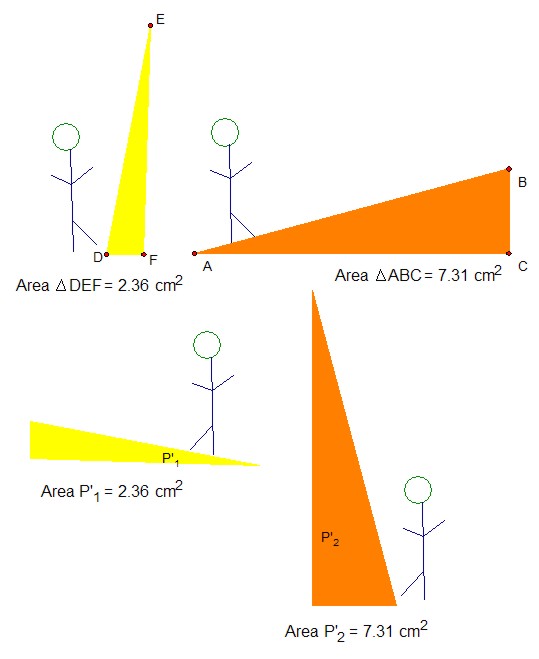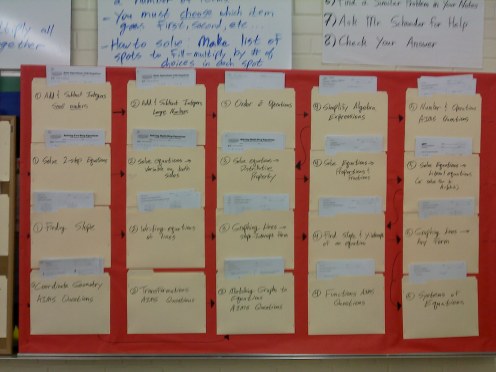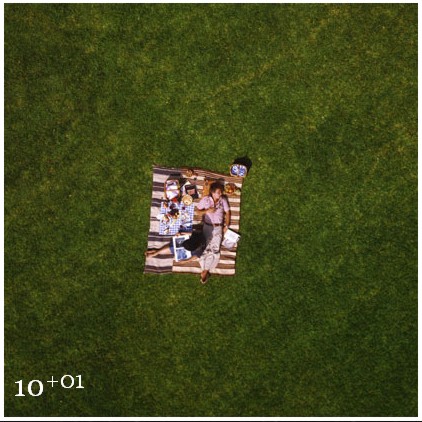If you are a regular visitor to this site, you will have seen a previous post in which I highlighted a number of outstanding blog posts written by teachers who really “get it” when it comes to engaging learners in mathematics lessons.
This week, I do a round-up of recent great posts from Tom Whitby, Larry Cuban, Fawn Nguyen, Daniel Schneider & Matt Vaudrey. Let me know in the comments what you think, or if you have other suggestions for my reading list.

Tom Whitby [My Island View] > “We Don’t Need No Stink’n Textbooks” #Beyondthetextbook
- Tom Whitby discusses the history of textbooks, particularly in American math education, and argues for a fresh look at how students are provided with the information they need to learn mathematics.
- ‘A decade into the new century we have a new way to deliver content. The internet not only delivers text, but allows it to be manipulated, transformed, evaluated, analyzed, merged with video and audio, created, and published.’
Manifesto for dumping textbooks for C21st tech from @tomwhitby “We Don’t Need No Stink’n Textbooks”http://ow.ly/afoTI
I came across this post a little while ago and tagged it for a future blog round-up. Checking again today, I’m in good company in thinking this is a great post – it has been reblogged or mentioned in blogs at least 18 times!
It’s fair to say that Tom is a veteran in the mathematics education field, and his writing is always eloquently expressed, thoughtful and thought-provoking. This piece asks questions that ought to be considered by every teacher, every school board, every body that decides how to spend money on classroom resources. The idea that schools should spend millions on dead-tree resources in order that students can receive what is considered the best material from which to learn math is fast becoming an embarrassing anachronism.
Larry Cuban [School Reform and Classroom Practice] > Student “Learning Styles” Theory Is Bunk (Daniel Willingham)
- Larry Cuban takes on a theory that is practically a religion in some circles. I often hear beginning teachers say that such-and-such an teaching strategy is used to cater for “visual learners” or “kinaesthetic learners”, without any foundation for the idea that learners need instruction tailored to their particular way of thinking.
- The author points out that teachers have much to do already catering for individual differences in their students, and following this theory is not only difficult to fit into what teachers already do, according to the research evidence it’s a waste of time.
- ‘When you think about it, the theory of learning styles doesn’t really celebrate the differences among children: On the contrary, the point is to categorize kids.’
I totally agree with this one: “Student ‘Learning Styles’ Theory Is Bunk” http://ow.ly/aint7 #edchat
This article, written by Daniel Willingham in 2009, is still relevant today, and I am grateful to Larry Cuban for reposting it. I think that the “learning styles’ theory is attractive to many educators, in the way it presents a simple way of thinking about the different ways that students learn. However, there are two clear problems with the idea: (i) the research data simply doesn’t support it, after studies going back to the 1940s have looked at various ideas about different ways of learning; and (ii) the main result of adopting the theory is to pigeon-hole students, into “visual”, “auditory” and “kinaesthetic” learners.
Great teachers cater for individual differences in their classes every day using as many methods as they can come up with. The other strategy I think is really powerful here is to use as many different resources that exemplify as many media as possible. Provide students with pictures, auditory stimuli, videos, interactive computer apps, text, teacher instruction, physical out-of-seat activities, etc, etc, in an attempt to find the best ways for every student to connect with the topic.
Fawn Nguyen [Teaching Math in Middle School] > Staircases and Steepness, Continued
- Fawn follows up her post from the day before, when she asked grade 6s how to judge which of a set of drawn staircases was the steepest, and to work out a method for justifying their decisions
- In part II, Fawn taught about slope, following up on the students’ discoveries and discussions
- ‘By Friday morning the kids who did “base times height” learned that these numbers didn’t match up with the steepness ranking. They said, “That just gives you area.”‘
The payoff in @fawnpnguyen ‘s lesson on slope: Don’t jump to “rise over run” too fast! #mathchat
I have told Fawn that I am a fully paid-up member of her fan club: she is simply the best teacher blogger I have yet come across sharing lessons for teaching mathematics. She has an adept touch in gently prodding and leading her students to think mathematically, to actually do the math, without once feeding them a formula or driving them to distraction through endless symbolic routines.

Fawn Nguyen
The other bonus when you read Fawn’s work is she is just so witty and caring, and you get a clear sense of her love for both math and her students.
The highlight for me in this particular lesson was Fawn’s comment ‘I finally said the word slope, but I never said “rise over run”‘. In my opinion, this finesses the learning for students: they learn about the idea of slope, and they learn how to calculate a measure that allows you to compare any two slopes for steepness, but they discovered it for themselves! I think it is clear that these students will remember what slope is and how you work it out long after students who learned to use “rise over run” have forgotten all about it.
Daniel Schneider [Mathy McMatherson] > The Wall of Remediation (Or: My Low-Tech Version of Khan Academy)
- Daniel shares a method he uses to differentiate instruction and remediate students’ difficulties in a remarkable, low-tech way: he provides students with a structured array of worksheets for them to practice the skills they’re missing
- The strategy is evidently producing impressive results, with students choosing worksheets to brush up on tricky math skills without being told to
- ‘Having this board available lets me quickly walk up and grab the particular skill they need to work on (integer operations, algebra, etc) and get them started on it. It also lets students be self motivated and do the exact same thing for themselves!’
Low-tech, high-impact differentiation of math teaching: Brilliant stuff from @MathyMcMatherso http://ow.ly/aRyVr #mathchat
This post is a brilliant example of how an excellent teacher can find ways to truly engage students in learning without cutting-edge technology, without some fancy new resource or fancy idea about teaching. It seems to me that the students are learning and all being kept on track because their teacher has made it easy for this to happen, and because his focus is on learning, not completing exercises.

Daniel Schneider
Daniel’s resources are not flashy at all; I asked him about the content of the worksheets, and he confirmed that they are just plain exercises to give targeted practice. The magic is in what he does with them.
Matt Vaudrey [Mr. V’s Class] > Mullets: The Only Lesson They’ll Remember
- Mr V goes above and beyond what he was taught at university about teaching math, and gives himself a mullet (really), then teaches an inspired lesson on proportion using measures of “mulletude”
- ‘I gave myself a mullet. It was totally worth it; every student came into class with a smile, already curious.’
Using ratios to measure Mulletude: brilliantly memorable math lesson from @MrVaudrey http://ow.ly/aOAYt#mathchat
This is another recent post that has generated a huge interest among math teachers, with 26 responses to date. Matt Vaudrey has taken a reasonably dry topic, ratios and proportion, and injected life and fun into it in a way that his students are unlikely to forget, perhaps for the rest of their lives. This lesson really is that good.
Not every teacher could wear a mullet even for the cause of a good math lesson, of course, but Matt pulls it off with flair and panache.

Matt Vaudrey
The important take-aways for me are the way he weaves real mathematics into a lesson that revolves around questions about the length of a person’s hair at the back and at the front, then uses that premise to generate lots of mathematical thinking. If you want to teach memorable math lessons with impact, there is a lot to pick up here, no matter what the topic and what the age group.
[hr]
Powers of Ten > Based on the file by Charles and Ray Eames
- This interactive site shows images at all scales from 10-18 to 1026 metres from the now-classic 1977 movie, Powers of Ten.
More mind stretching via @mathforlove Powers of Ten. Based on 70s film by Eames. http://ow.ly/av412#mathchat http://ow.ly/i/AmNt

Powers of Ten
This is not a blog as such, though there is one on the site. But I just couldn’t resist including the site in this round-up. If you teach mathematics, and you want ways to help your students grasp the different sizes represented by powers of 10, you have to look at the site. The movie itself, unsurprisingly, is now available for free on YouTube. The music soundtrack and narration are now dated, but the images blow me away every time I watch it.
Image credits:
- Red typewriter: alexkerhead at Flickr
- Slope diagrams: Fawn Nguyen
- Bulletin board: Daniel Schneider
- Mullet: Matt Vaudrey
- 10 Meters squared: Powers of Ten

